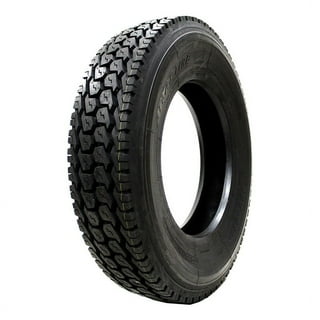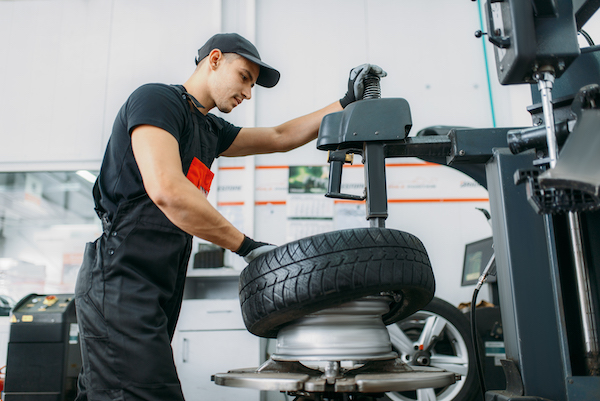Trusted Tire Shop Morris: Comprehensive Tire Solutions and Exceptional Service
Trusted Tire Shop Morris: Comprehensive Tire Solutions and Exceptional Service
Blog Article
Tire Service: The Influence of Climate Condition
When it comes to ensuring optimum efficiency and security when traveling, recognizing the effect of weather condition conditions on tire solution is vital. From scorching warm to icy roadways, each weather condition element can significantly affect tire performance and overall driving experience. By delving right into the impacts of varying climate conditions on tires, drivers can get important insights that might enhance their lorry's performance and long life. In this discussion, we will certainly explore the detailed connection in between climate condition and tire service, losing light on the significance of weather-specific tire upkeep methods and factors to consider.
Heat and Tire Performance
When subjected to high temperatures, tires experience modifications in efficiency that can substantially affect automobile safety and security and handling. The warm produced from extended driving or hot weather condition conditions triggers the tire rubber to soften, leading to decreased tread life and enhanced wear.
Furthermore, heats can accelerate the process of tire aging, creating the rubber to wear away quicker. This can lead to fractures, bulges, and other kinds of damages that jeopardize the structural integrity of the tire. To mitigate the results of warm on tire performance, drivers should routinely check their tire stress, turn tires to guarantee even put on, and check for any signs of damages. Furthermore, using tires especially created to stand up to heats can aid keep optimal performance and safety and security on the roadway.
Cold Weather Condition Results
Cold weather condition problems can have a substantial impact on tire performance and security. In chilly weather condition, tires might additionally lose air pressure much more quickly, which can impact managing and gas performance.
To mitigate the effects of winter on tires, it is important to regularly check tire pressure and inflate them to the producer's recommended degrees. Making use of winter months or all-season tires created for winter problems can additionally boost grip and grasp on icy or snowy roadways - morris tire and alignment. Appropriate tire maintenance, including regular evaluations for wear and damage, becomes much more critical throughout cooler months to make sure ideal performance and safety
Rainy Conditions Influence
During wet problems, tire performance and security can be dramatically influenced by the damp roadway surfaces and decreased presence. The tread pattern of tires plays an important duty in maintaining traction on damp roadways. Tires with damaged treads are much more vulnerable to hydroplaning, where a layer of water develops up in between the tire and the road surface area, leading to loss of traction. To fight this, motorists need to frequently check their tires for ample tread depth and consider buying tires particularly created for wet conditions.

Snow and Tire Security
Snow-covered roads pose unique obstacles for motorists, highlighting the significance of proper tire option and upkeep. When driving in snowy conditions, having the appropriate tires can make a substantial difference in safety and efficiency. Wintertime tires are developed with unique rubber compounds and tread patterns to give much better traction on snow and ice contrasted to all-season tires. The deeper footsteps and sipes of wintertime tires help see it here grasp the road much better, minimizing the risk of sliding and gliding.
Along with making use of winter season tires, it is crucial to guarantee they are appropriately blown up. Winter can create tire pressure to drop, affecting traction and handling (mopar tire service specials). Regularly checking and keeping the appropriate tire stress is important for ideal performance in snowy problems

Weather-Related Tire Upkeep
Weather-related tire upkeep encompasses a range of methods aimed at making sure optimum tire feature and long life in various climate scenarios. One key aspect of weather-related tire maintenance is tire pressure policy. Checking tire walk consistently and changing tires when step wear gets to a particular deepness is crucial for keeping grip and security in negative weather condition.
Final Thought
Finally, weather have a considerable influence on tire performance and safety and security. From warmth impacting tire pressure and use to chilly weather decreasing traction, it is vital to consider the weather when keeping and making use of tires. Wet conditions can decrease grasp and bring about hydroplaning, while snow can boost the danger of accidents if tires are not properly outfitted. Weather-related tire upkeep is important in guaranteeing optimal efficiency and security on the roads.
In this conversation, we will check out the intricate partnership between climate conditions and tire solution, shedding light on the value of weather-specific tire maintenance methods and considerations.

Report this page